A Survey of Medical Device and ICT Links in Medicine
1/51
There's no tags or description
Looks like no tags are added yet.
Name | Mastery | Learn | Test | Matching | Spaced |
|---|
No study sessions yet.
52 Terms
Aspects of Medical Device and ICT Integration (12)
Instrument interfacing
Continuous data logging
Digital medical imaging systems
Medical device control
Process automation
Hospital ICT systems
Robotics
Simulation
CAD Artificial Intelligence Machine learning
Telemedicine
Prosthetics
Smart apps
Instrument Interfacing
Linking instruments to computers so that data can be captured automatically into computer memory
What do we mean by ‘digital’ in instrumentation?
Use of discrete signals and numerical values for measurement processing and data representation
Challenges of Medical Instruments
Signals from medical instruments can be complex (e.g., ECG/EEG)
Larger signal complexity leads to larger computer file sizes
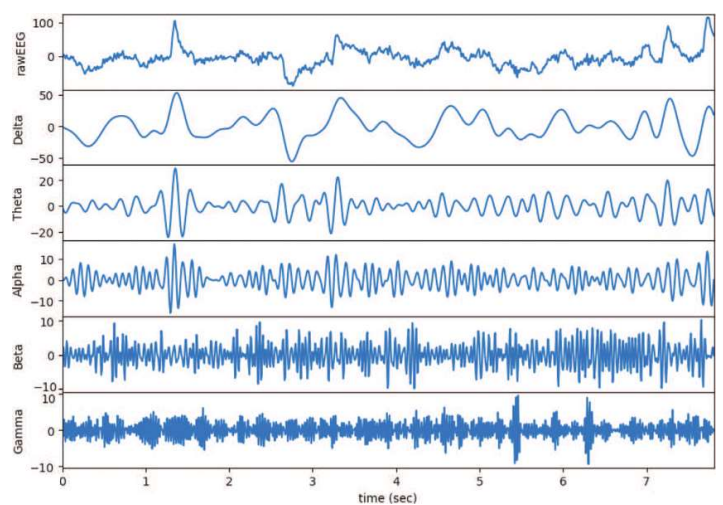
Large file sizes cause (4)
Memory requirements issues
Long signal processing times
Long data transfer times
Problems with email attachments
Solutions in Medical Instrument Signal Processing (2)
Time Sampling
Quantisation of the Voltage
Time Sampling (5)
Continuous (analogue) real-world signals
Not all values saved, only a sample
Low sampling frequency reduces file size
High sampling frequency reduces uncertainty but increases file size
Too low a sampling frequency causes signal distortion
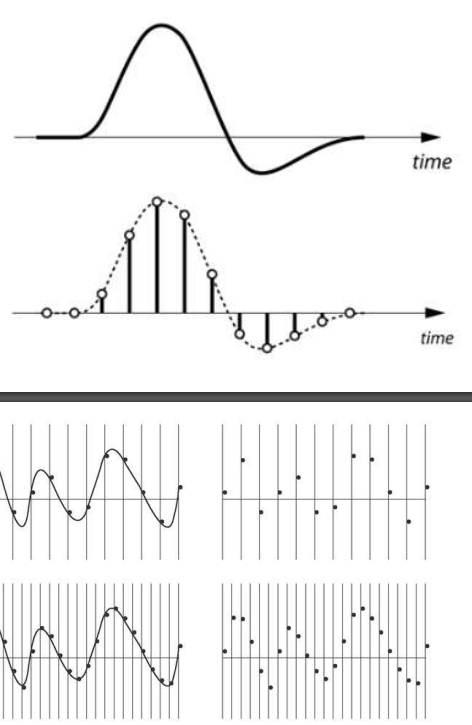
Quantisation of the Voltage (5)
Limiting voltage values to save file size
(‘quantising’ the measurement range)
1 byte of memory saves 256 levels
# of Quantisation levels = 2n
n is bit-depth of the ADC
Higher bit-depth improves precision but increases file size
ADC
Analogue-to-Digital Converter
DAC
Digital-to-Analogue Converter
Nyquist Theorem
To avoid output signal distortion the sampling frequency must be at least double the highest frequency in the Fourier Spectrum of the original analogue signal
Calculating Filesizes - Suppose we want to save a 5 minute long signal as a digital file (3)
Sampling frequency = 100 Hz (100 samples per second)
Bit depth = 16 (2 bytes per measurement)
Formula: 100 samples per second × 300 seconds × 2 bytes per sample = 60,000 bytes = 60 kB
ADC and DAC in Signal Processing (3)
ADC:
Converts analogue signals to digital
DAC:
Converts digital signals back to analogue for display on output devices (e.g., computer monitor or printer)
operation smooths the output by connecting sampled points

Advantages of digital systems (2)
Easier signal processing (e.g., amplification, smoothing, filtering)
Processing is programmable and can be automated
Continuous Data Logging (2)
Automatic collection of data at a preprogrammed sampling rate over an extended time period
Fx.: Holter-ECG monitoring; CGM
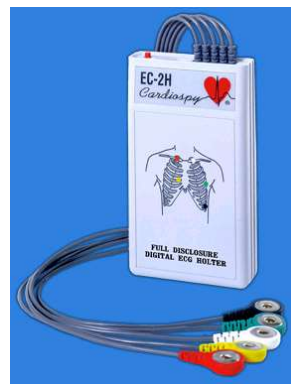
Holter-ECG monitoring (4)
Portable device worn by a patient during normal activity
Electrocardiograph interfaced to a data capture system
Stores up to 24 hours of ECG data
Useful for detecting cardiac arrhythmia not visible in a brief ECG at a doctor's office
Continuous Glucose Monitoring (CGM) Components (4)
Sensor
Transmitter
Smartphone app, receiver
Insulin pump
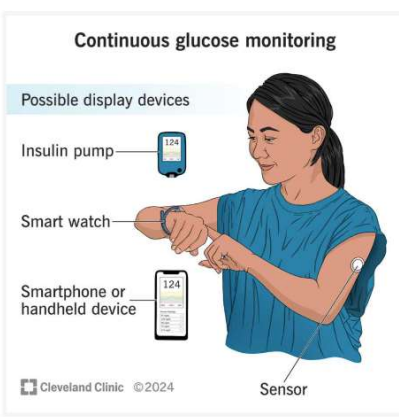
CGM Sensor
A small piece of material inserted under the skin to measure glucose levels, lasting 7-15 days or months for implantable systems
CGM Transmitter
Wirelessly sends glucose data from the sensor to a viewing device
CGM Smartphone app, receiver, or insulin pump
Displays real-time glucose levels, trends, and history, with some systems compatible with insulin pumps
Continuous Glucose Monitoring (CGM) (3)
Wearable technology that tracks glucose levels in real-time
Measures glucose in interstitial fluid just under the skin 24/7
Primarily used by people with diabetes for managing glucose levels
Digital Medical Imaging Systems
measure the variation of a physical variable (e.g., density, temperature) across the patient's body
Not all values can be measured due to large file sizes
fx.: Spatial Sampling
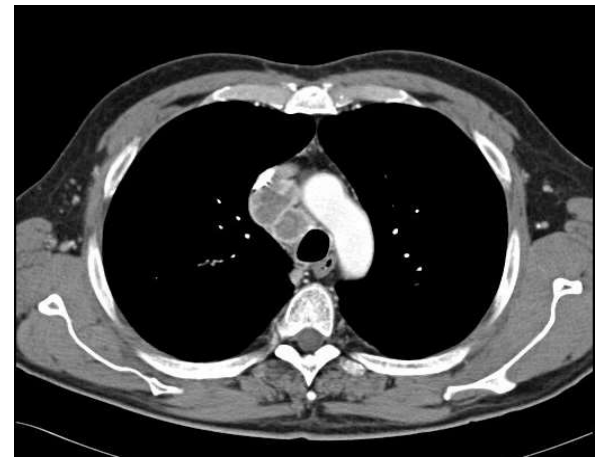
Spatial Sampling definition
The process of sampling a continuous signal (such as a medical image) at discrete intervals in space, typically measured in pixels per unit of distance (e.g., pixels per cm)
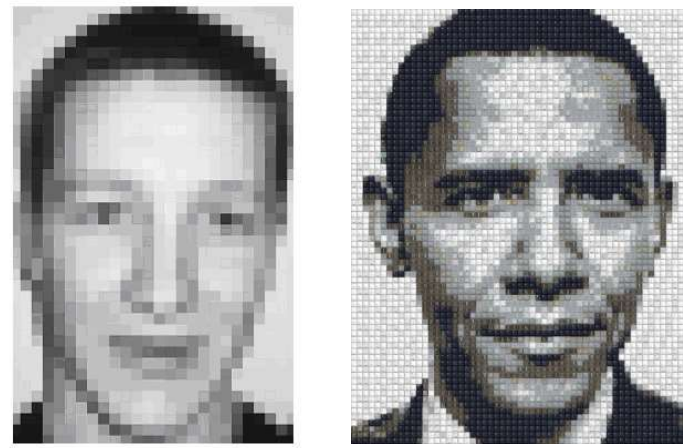
Spatial Sampling (3)
The higher the spatial sampling frequency (pixels per cm) the more detailed the image
A higher number of megapixels increases spatial sampling frequency improving image detail
A higher spatial sampling rate improves image detail but increases file sizes
Medical Imaging Device definition (3)
Instruments with a measuring function
The device splits the patient into a 3D set of voxels (like a Rubik's cube)
Each voxel represents a physical property (e.g., density, temperature)
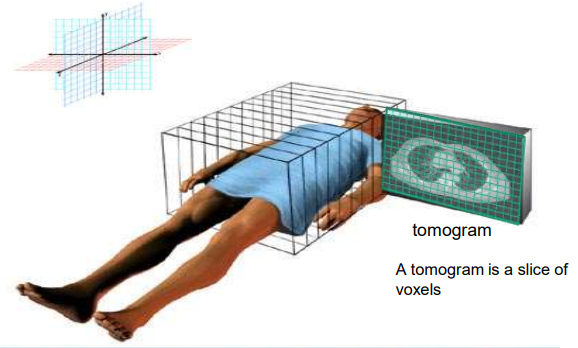
Tomogram
A 2D plane (slice) of voxels
Linear Attenuation Coefficients in HU (Hounsfield Units) (4)
measure how much X-ray radiation is absorbed or scattered as it passes through a material
In CT imaging, these coefficients are used to calculate Hounsfield Units (HU)
represents tissue density
HU values help differentiate between various tissues
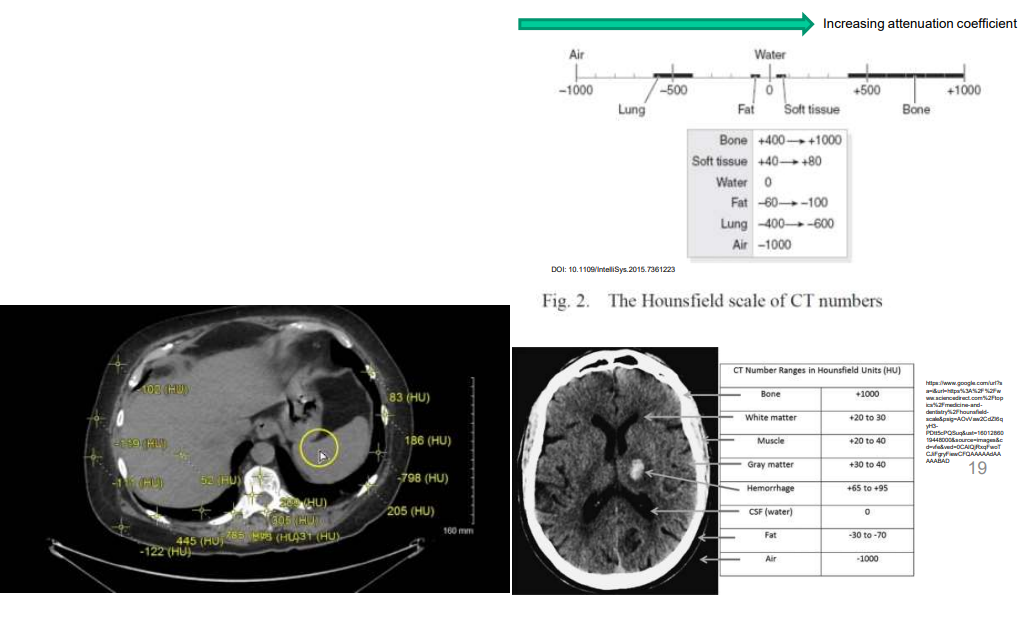
Visualizing Physics Patient Voxel Data (photo!)
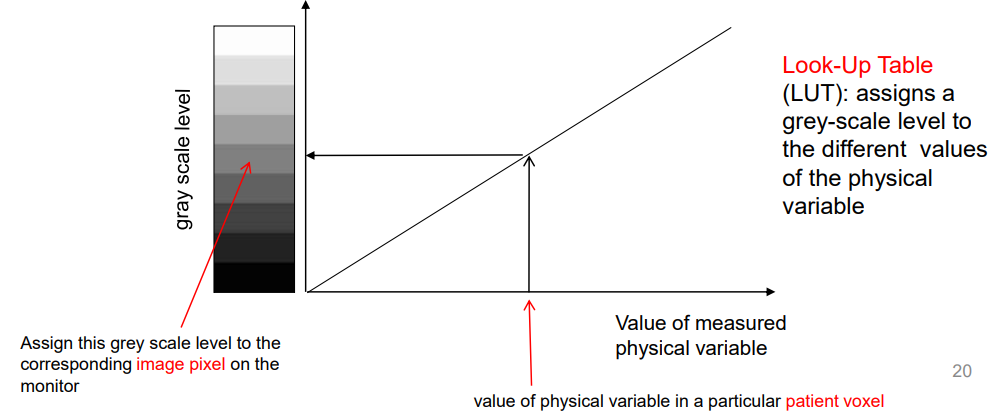
Medical Device Control (5)
Medical devices are controlled by instructions programmed into a computer:
Example Pathology Lab
Neonatal incubator
CT scanner
Automated instructions ensure precise + consistent imaging → ↑ accuracy +efficiency of the scan
Example Pathology Lab (2)
take measurements of temperature every 60s
switch off heater when temperature of sample reaches 40 degrees
Neonatal incubator (2)
take measurements of temperature every 60s
maintain temperature within a given range
CT scanner (4)
move patient by a specific distance - 10mm
rotate x-ray tube
collect x-ray tomogram data
repeat sequence from diaphragm to knees
Automation in the Medical Lab (4)
BOD (beginning-of-day):
automatic start-up and warm-up of instruments and automatic calibration check
Automatic sorting of different laboratory samples
(using colour, bar-code systems, etc)
Automatic checking of reagent levels and replenishment
Automatic number of repeat acquisitions on each sample and calculation of average and uncertainty
Levels of Medical Laboratory Automation (2+1)
Total Laboratory Automation (TLA)
Modular Laboratory Automation (MLA)
Due to the high cost of TLA, the trend is towards MLA
Total Laboratory Automation (TLA) (3)
complete automation from specimen input through pre-analytical, analytical phases to final result report generation
repeat runs are done automatically
extremely expensive
Modular Laboratory Automation (MLA)
workflow in the laboratory is analyzed to identify 'bottle-necks' and automate those specific parts
Hospital ICT Software Types (2)
Patient Information Systems (PIS)
Medical image management
Patient Information Systems (PIS) (4)
manage and store patient-related data in various departments:
Laboratory Information Systems (LIS) in Pathology
Radiological Information Systems (RIS) in Radiology
Oncology Information System (OIS) in Oncology
Medical image management (3)
deals with the storage and handling of medical images like CT, MRI, USI, and digital microscopy
PACS (Picture Archiving and Communication Systems) for managing medical images
DICOM (Digital Imaging and Communications in Medicine) file format used for medical images (e.g., .dcm files)
Simple Robotics
Medical Laboratory robots that pipette samples and reagents from containers and transfer them into cuvettes for measurements
More complex Robotics
Surgical robotic systems
fx.: Da Vinci System
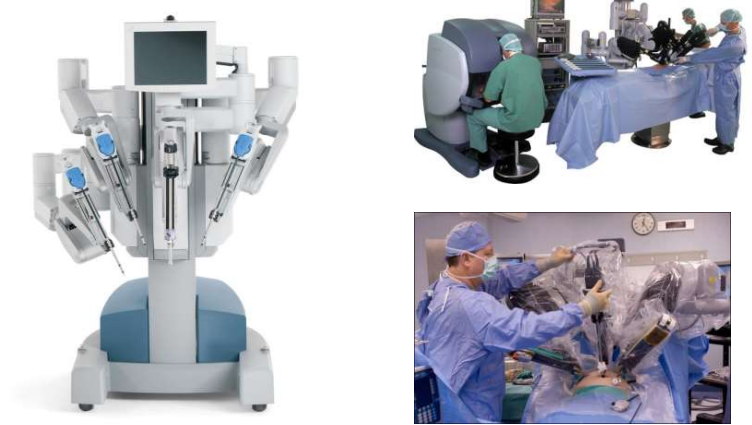
Very complex Robotics
Oncology linac X-ray beam radiosurgery systems
CyberKnife® (5)
part of Robotic ‘Radiosurgery’ Systems
components:
Small linear accelerator producing 6MV beams
Robotic arm to aim the linac towards the tumour from various angles
X-ray imaging and optical devices to continuously track patient and tumour position in real time for accurate radiation targeting
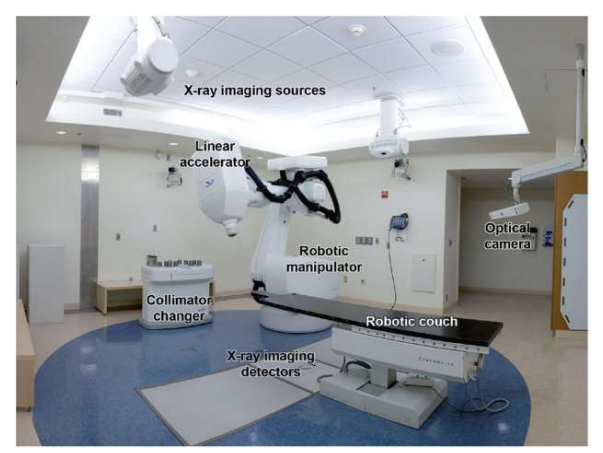
Simulation (3)
Practice difficult or dangerous procedures on virtual patients
Create virtual personalized models for planning procedures like radiotherapy
Use CT scanner and linac simulator for virtual treatment planning

Type of Simulation (3)
Breast Treatment Plan
Cancer Treatment Planning
Treatment plan for an optic nerve
Breast Treatment Plan (photo)
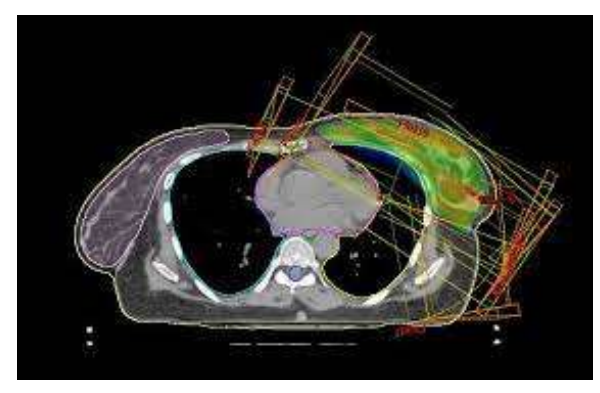
Cancer Treatment Planning
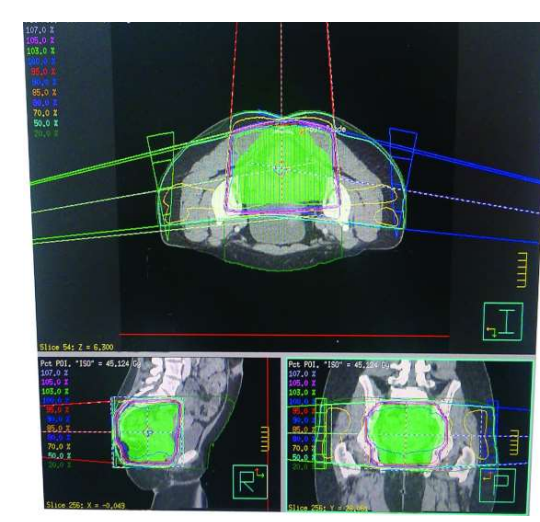
Treatment plan for an optic nerve
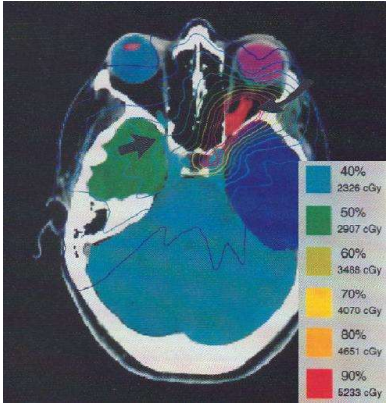
AI (5)
CAD = Computer Aided Diagnosis/Detection
uses AI to assist in diagnosing or detecting diseases based on medical images
ML = Machine Learning
predicting outcomes or aiding in diagnosis
algorithms that learn from data and improve over time
Telemedicine (3)
Use of telecommunication systems to provide medical information and services
Can range from simple consultations between health professionals to complex telesurgery
Involves satellite technology, videoconferencing, and remote surgical robot manipulation
Prosthetics
Design, creation, and fitting of artificial limbs or devices to replace missing body parts
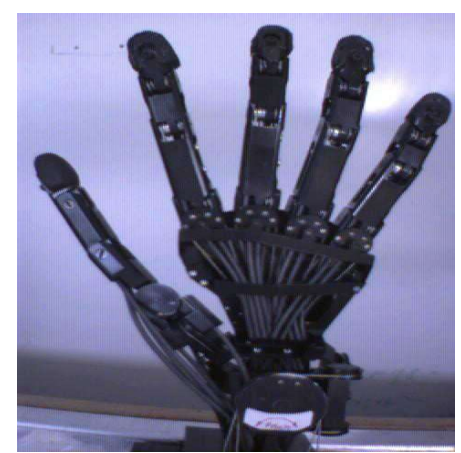
Health Care Apps for Smartphones (2)
These apps are considered medical devices
Fx.: Welldoc system
for managing type 2 diabetes, approved as a medical device